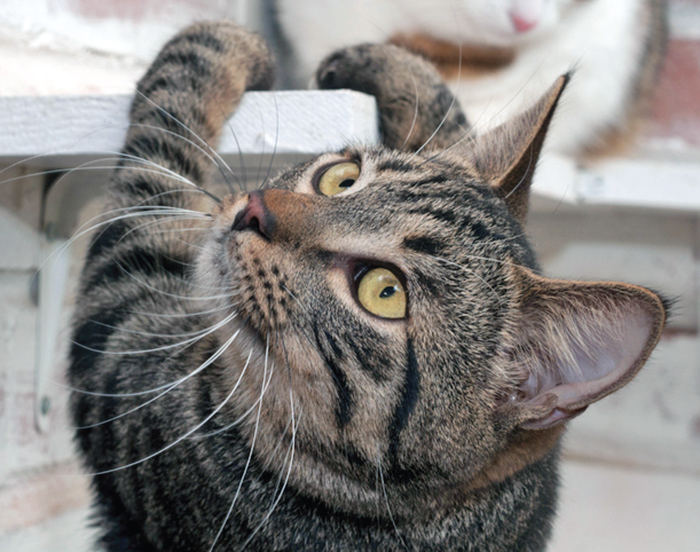Internal bleeding in cats can happen without warning and frequently shows no outward indication.
The most common cause of internal bleeding is trauma. For outdoor cats, potential accidents include being hit by a car, attacked by a larger animal, and falls. Indoor cats can also suffer falls, get accidentally stepped on or slammed in a door, or injured by a reclining chair.
Rat-poison ingestion, depending on the type of rat poison, can also result in internal bleeding. Other less common causes in cats include coagulopathies (bleeding disorders resulting in inability to clot) and ruptured internal tumors.
Signs to watch for include:
- Changes in breathing
- Collapse
- Hiding
- Inappetence
- Lethargy
- Pale mucous membranes
- Weakness
You may notice your cat’s paws and lower limbs are cool to the touch. If there is bleeding into the abdomen, you may see abdominal distension.
An important breathing change to watch for is an elevated respiratory rate. The normal resting respiratory rate in cats is 35 or fewer breaths per minute. With internal bleeding, blood is pouring into a cavity, typically the chest and/or abdomen, which means fewer circulating red blood cells, which carry oxygen to the body tissues. As the tissues become more oxygen deficient, the brain tells the lungs to breathe faster to deliver oxygen from inhaled air at an increased rate.
Practice counting breaths per minute in your cat now, while she is well, so you’re familiar with how to do this while not under stress. This will make it easier to do when there is a problem. Of course, internal bleeding isn’t the only ailment that causes increases in respiratory rate. Either way, though, if your cat’s respiratory rate is typically 35 breaths per minute, and now it is at 50, she needs to be seen by a veterinarian immediately.
Other potential breathing changes include shallow breaths and abdominal breathing. If your cat is bleeding into her chest, there is less room for the lungs to expand, resulting in rapid shallow breaths. Abdominal breathing is when you see your cat’s abdomen expanding and dramatically contracting with each breath. This happens because of to the extra effort necessary to try and get air in and out of the compromised lungs.
Mucous membranes you can see include the gums and the conjunctival tissue around the eyes. In good health, these tissues have a nice pink color. When there is internal bleeding, these membranes will become pale, ranging from a soft gray to white in color. You may notice loss of visible blood vessels on the whites of the eyes, and your cat’s pretty pink nose may turn white.
Lethargy, weakness, and collapse usually result from the drop in blood pressure that occurs as blood leaves the vessels. Basically, your cat is entering the first stages of shock when this happens.
The bottom line is, even if your cat stays safely indoors, trauma or diseases that cause life-threatening internal bleeding are still possible. Know your cat’s baseline health, including her resting respiratory rate and gum color, and learn the signs associated with internal bleeding. Time, in this instance, really can mean the difference between survival and death.




